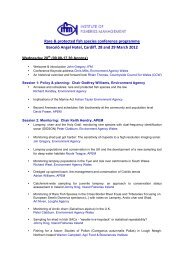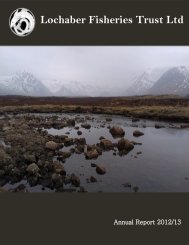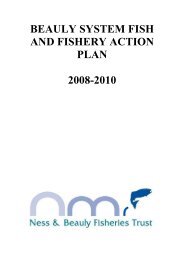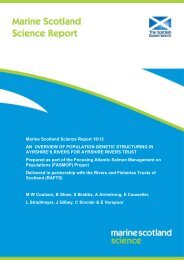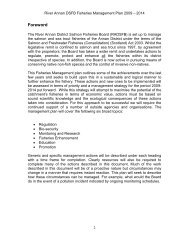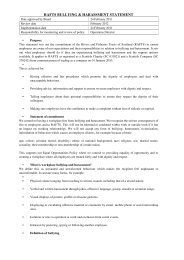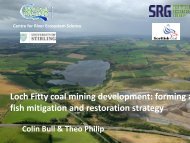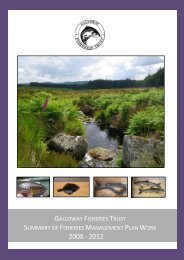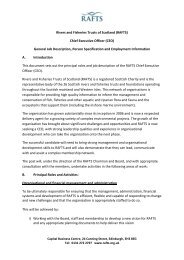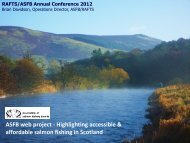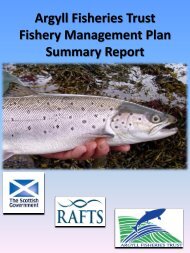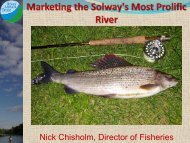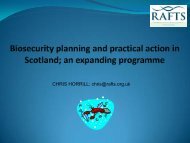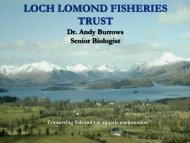You also want an ePaper? Increase the reach of your titles
YUMPU automatically turns print PDFs into web optimized ePapers that Google loves.
line with the best practices employed throughout Scotland. This includes providinginformation and facilities for anglers for dealing with matters of national importancesuch as biosecurity measures against Gyrodactylus salaris (see also 4.6.4. below).The information produced by the RDT should be effectively disseminated to all thosewith an interest in the fish and fishery through the production of reports and thewebsite currently under development (www.riverdon.org.uk) to be of greatest value tomanaging the fishery.4.6.3 Pollution Reduction MeasuresAlthough habitat improvement measures can be targeted to intercept pollutants beforethey enter the river and so increase fish productivity, much of the diffuse pollutionentering the watercourse is outwith the control of fishery management bodies.Measures such as the Controlled Activities Regulations, the River Urie EnvironmentalImprovement Action <strong>Plan</strong> and the Nitrate Vulnerable Zone Action Programme beingcarried forward by SEPA and Scottish Water’s improvement measures to reducephosphorus release at a number of sewage treatment works should be fully supported.The RDT welcomes the opportunity to comment on the recently produced (December2008) Draft North East Scotland Area <strong>Management</strong> <strong>Plan</strong>(www.sepa.org.uk/water/river_basin_planning.aspx) in order to ensure wider cooperationin improving and maintaining the good status of the River <strong>Don</strong>, and toensure the actions of this plan make a positive contribution.4.6.4 Establish Biosecurity Measures for Non-Native Invasive SpeciesThe <strong>Don</strong> DSFB is already investigating measures to control the growth of invasivespecies such as Giant Hogweed and Japanese Knotweed on the catchment. In linewith District Boards and Fisheries Trusts throughout Scotland the <strong>Don</strong> DSFB hasadopted a disease prevention policy to reduce the risk of the parasite Gyrodactylussalaris being introduced to Scotland on fishing tackle and equipment that has beenused abroad. The need for further biosecurity measures is being examined centrallyfor fisheries organisations through the Rivers and Fisheries Trusts of Scotland, ofwhich the RDT is a member.4.7 Potential Future Data CollectionThe need for additional lines of information may arise during the course of the initialdata gathering. Data sources for future consideration may include:• Installation of a counter – for instance to quantify the number of migratory adultsreturning to a sub-catchment of the <strong>Don</strong> to determine if the Conservation Codeand current bag limits employed are appropriate to the fish stock• Radio tagging – for instance to follow adult salmon from the Newe weir to theirspawning beds• Invertebrate sampling – to evaluate the invertebrate community present in avariety of locations in the catchment as an indication of the water quality and thefood resource available to juvenile fish and to provide a baseline before habitatimprovements are carried out.35



